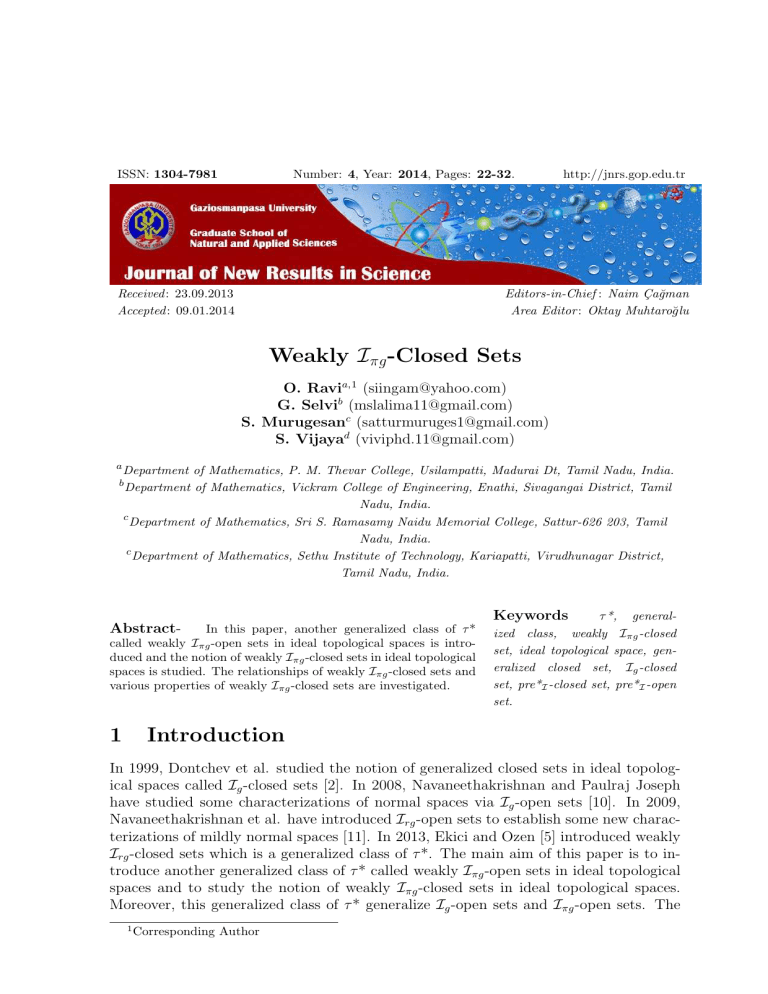
ISSN: 1304-7981
Number: 4, Year: 2014, Pages: 22-32.
Received : 23.09.2013
Accepted : 09.01.2014
http://jnrs.gop.edu.tr
Editors-in-Chief : Naim Çağman
Area Editor : Oktay Muhtaroğlu
Weakly Iπg -Closed Sets
O. Ravia,1 ([email protected])
G. Selvib ([email protected])
S. Murugesanc ([email protected])
S. Vijayad ([email protected])
a
Department of Mathematics, P. M. Thevar College, Usilampatti, Madurai Dt, Tamil Nadu, India.
Department of Mathematics, Vickram College of Engineering, Enathi, Sivagangai District, Tamil
Nadu, India.
c
Department of Mathematics, Sri S. Ramasamy Naidu Memorial College, Sattur-626 203, Tamil
Nadu, India.
c
Department of Mathematics, Sethu Institute of Technology, Kariapatti, Virudhunagar District,
Tamil Nadu, India.
b
Abstract-
In this paper, another generalized class of τ *
called weakly Iπg -open sets in ideal topological spaces is introduced and the notion of weakly Iπg -closed sets in ideal topological
spaces is studied. The relationships of weakly Iπg -closed sets and
various properties of weakly Iπg -closed sets are investigated.
1
Keywords
τ *, generalized class, weakly Iπg -closed
set, ideal topological space, generalized closed set, Ig -closed
set, pre*I -closed set, pre*I -open
set.
Introduction
In 1999, Dontchev et al. studied the notion of generalized closed sets in ideal topological spaces called Ig -closed sets [2]. In 2008, Navaneethakrishnan and Paulraj Joseph
have studied some characterizations of normal spaces via Ig -open sets [10]. In 2009,
Navaneethakrishnan et al. have introduced Irg -open sets to establish some new characterizations of mildly normal spaces [11]. In 2013, Ekici and Ozen [5] introduced weakly
Irg -closed sets which is a generalized class of τ *. The main aim of this paper is to introduce another generalized class of τ * called weakly Iπg -open sets in ideal topological
spaces and to study the notion of weakly Iπg -closed sets in ideal topological spaces.
Moreover, this generalized class of τ * generalize Ig -open sets and Iπg -open sets. The
1
Corresponding Author
Journal of New Results in Science 4 (2014) 22-32
23
relationships of weakly Iπg -closed sets and various properties of weakly Iπg -closed sets
are discussed.
2
Preliminaries
In this paper, (X, τ ) represents topological space on which no separation axioms are
assumed unless explicitly stated. The closure and the interior of a subset G of a space
X will be denoted by cl(G) and int(G), respectively. A subset G of a topological space
(X, τ ) is said to be regular open [14] (resp. regular closed [14]) if G = int(cl(G)) (resp.
G = cl(int(G))). A subset G of a topological space (X, τ ) is said to be regular open if
X\G is regular closed. A subset G of a topological space (X, τ ) is said to be π-open
[16] if the finite union of regular open sets. A subset G of a topological space (X, τ ) is
said to be π-closed [16] if X\G is π-open.
An ideal I on a topological space (X, τ ) is a nonempty collection of subsets of X
which satisfies
1. A ∈ I and B ⊆ A imply B ∈ I and
2. A ∈ I and B ∈ I imply A∪B ∈ I [8].
Given a topological space (X, τ ) with an ideal I on X if P(X) is the set of all subsets
of X, a set operator (•)? : P(X) → P(X), called a local function [8] of A with respect
to τ and I is defined as follows: for A ⊆ X, A? (I, τ ) = {x ∈ X | U ∩ A ∈
/ I for every
U ∈ τ (x)} where τ (x) = {U ∈ τ | x ∈ U}. A Kuratowski closure operator cl? (•) for
a topology τ ? (I, τ ), called the ?-topology and finer than τ , is defined by cl? (A) = A
∪ A? (I, τ ) [15]. We will simply write A? for A? (I, τ ) and τ ? for τ ? (I, τ ). If I is an
ideal on X, then (X, τ , I) is called an ideal topological space. On the other hand, (A,
τA , IA ) where τA is the relative topology on A and IA = {A ∩ J : J ∈ I} is an ideal
topological space for an ideal topological space (X, τ , I) and A ⊆ X [7]. For a subset
A ⊆ X, cl*(A) and int*(A) will, respectively, denote the closure and the interior of A
in (X, τ *).
Definition 2.1. A subset G of an ideal topological space (X, τ , I) is said to be
1. Ig -closed [2] if G* ⊆ H whenever G ⊆ H and H is open in (X, τ , I).
2. Ig -open [2] if X\G is an Ig -closed.
3. pre*I -open [4] if G ⊆ int*(cl(G)).
4. pre*I -closed [4] if X\G is pre*I -open.
5. Irg -closed [11] if G* ⊆ H whenever G ⊆ H and H is a regular open set in (X, τ ,
I).
6. Irg -open [11] if X\G is an Irg -closed set.
7. Iπg -closed [13] if G* ⊆ H whenever G ⊆ H and H is a π-open set in (X, τ , I).
8. Iπg -open [13] if X\G is an Iπg -closed set.
24
Journal of New Results in Science 4 (2014) 22-32
9. I-R closed [1] if G = cl*(int(G)).
10. ∗-closed [7] if G = cl*(G) or G* ⊆ G.
11. weakly Irg -closed set [5] if (int(G))* ⊆ H whenever G ⊆ H and H is a regular
open set in X.
Remark 2.2. [3] In any topological space (X, τ ), the following properties hold:
1. Every regular open set is π-open but not conversely.
2. Every π-open set is open but not conversely.
3
Another Generalized Class of τ *
Definition 3.1. Let (X, τ , I) be an ideal topological space. A subset G of (X, τ , I) is
said to be a weakly Iπg -closed set if (int(G))* ⊆ H whenever G ⊆ H and H is a π-open
set in X.
Example 3.2. Let (X, τ , I) be an ideal topological space such that X = {a, b, c}, τ =
{∅, {a}, {b}, {a, b}, X} and I = {∅, {a}}. Then {a} is weakly Iπg -closed set and {b}
is not a weakly Iπg -closed set.
Definition 3.3. Let (X, τ , I) be an ideal topological space and G ⊆ X. Then G is said
to be a weakly Iπg -open set if X\G is a weakly Iπg -closed set.
Remark 3.4. Let (X, τ , I) be an ideal topological space. The following diagram holds
for a subset G ⊆ X:
Ig -closed
↑
∗-closed
↑
I-R-closed
−→
Iπg -closed
↓
−→ weakly Iπg -closed
−→
Irg -closed
↓
−→ weakly Irg -closed
↑
pre*I -closed
These implications are not reversible as shown in the following examples and in [1,
2, 4, 5, 10, 11, 13].
Example 3.5. Let (X, τ , I) be an ideal topological space such that X = {a, b, c, d},
τ = {∅, {a}, {b}, {a, b}, {b, c}, {a, b, c}, X} and I = {∅}. Then {c} is a weakly
Iπg -closed set but not an Iπg -closed set.
Example 3.6. Let X, τ and I be as in Example 3.5. Then {c} is a weakly Iπg -closed
set but not ∗-closed.
Proposition 3.7. Every weakly Iπg -closed set is a weakly Irg -closed but not conversely.
Example 3.8. Let X, τ and I be as in Example 3.2. Then {a, b} is a weakly Irg -closed
set but not a weakly Iπg -closed set.
Journal of New Results in Science 4 (2014) 22-32
25
Theorem 3.9. Let (X, τ , I) be an ideal topological space and G ⊆ X. The following
properties are equivalent:
1. G is a weakly Iπg -closed set,
2. cl*(int(G)) ⊆ H whenever G ⊆ H and H is a π-open set in X.
Proof. (1) ⇒ (2) : Let G be a weakly Iπg -closed set in (X, τ , I). Suppose that G ⊆
H and H is a π-open set in X. We have (int(G))* ⊆ H. Since int(G) ⊆ G ⊆ H, then
(int(G))* ∪ int(G) ⊆ H. This implies that cl*(int(G)) ⊆ H.
(2) ⇒ (1) : Let cl*(int(G)) ⊆ H whenever G ⊆ H and H is π-open in X. Since
(int(G))* ∪ int(G) ⊆ H, then (int(G))* ⊆ H whenever G ⊆ H and H is a π-open set in
X. Thus G is a weakly Iπg -closed set.
Theorem 3.10. Let (X, τ , I) be an ideal topological space and G ⊆ X. If G is π-open
and weakly Iπg -closed, then G is ∗-closed.
Proof. Let G be a π-open and weakly Iπg -closed set in (X, τ , I). Since G is π-open
and weakly Iπg -closed, cl*(G) = cl*(int(G)) ⊆ G. Thus, G is a ∗-closed set in (X, τ ,
I).
Theorem 3.11. Let (X, τ , I) be an ideal topological space and G ⊆ X. If G is a weakly
Iπg -closed set, then (int(G))* \G contains no any nonempty π-closed set.
Proof. Let G be a weakly Iπg -closed set in (X, τ , I). Suppose that H is a π-closed set
such that H ⊆ (int(G))*\G. Since G is a weakly Iπg -closed set, X\H is π-open and G
⊆ X\H, then (int(G))* ⊆ X\H. We have H ⊆ X\(int(G))*. Hence, H ⊆ (Int(G))* ∩
(X\(int(G))*) = ∅. Thus, (int(G))*\G contains no any nonempty π-closed set.
Theorem 3.12. Let (X, τ , I) be an ideal topological space and G ⊆ X. If G is a weakly
Iπg -closed set, then cl*(int(G))\G contains no any nonempty π-closed set.
Proof. Suppose that H is a π-closed set such that H ⊆ cl*(int(G))\G. By Theorem 3.11,
it follows from the fact that cl*(int(G))\G = ((int(G))* ∪ int(G))\G.
Theorem 3.13. Let (X, τ , I) be an ideal topological space. The following properties
are equivalent:
1. G is pre*I -closed for each weakly Iπg -closed set G in (X, τ , I),
2. Each singleton {x} of X is a π-closed set or {x} is pre*I -open.
Proof. (1) ⇒ (2) : Let G be pre*I -closed for each weakly Iπg -closed set G in (X, τ ,
I) and x ∈ X. We have cl*(int(G)) ⊆ G for each weakly Iπg -closed set G in (X, τ , I).
Assume that {x} is not a π-closed set. It follows that X is the only π-open set containing
X\{x}. Then, X\{x} is a weakly Iπg -closed set in (X, τ , I). Thus, cl*(int(X\{x})) ⊆
X\{x} and hence {x} ⊆ int*(cl({x})). Consequently, {x} is pre*I -open.
(2) ⇒ (1) : Let G be a weakly Iπg -closed set in (X, τ , I). Let x ∈ cl*(int(G)).
Suppose that {x} is pre*I -open. We have {x} ⊆ int*(cl({x})). Since x ∈ cl*(int(G)),
then int*(cl({x})) ∩ int(G) 6= ∅. It follows that cl({x}) ∩ int(G) 6= ∅. We have cl({x}
∩ int(G)) 6= ∅ and then {x} ∩ int(G) 6= ∅. Hence, x ∈ int(G). Thus, we have x ∈ G.
Suppose that {x} is a π-closed set. By Theorem 3.12, cl*(int(G))\G does not contain
{x}. Since x ∈ cl*(int(G)), then we have x ∈ G. Consequently, we have x ∈ G.
Thus, cl*(int(G)) ⊆ G and hence G is pre*I -closed.
Journal of New Results in Science 4 (2014) 22-32
26
Theorem 3.14. Let (X, τ , I) be an ideal topological space and G ⊆ X. If cl*(int(G))\G
contains no any nonempty ∗-closed set, then G is a weakly Iπg -closed set.
Proof. Suppose that cl*(int(G))\G contains no any nonempty ∗-closed set in (X, τ , I).
Let G ⊆ H and H be a π-open set. Assume that cl*(int(G)) is not contained in H. It
follows that cl*(int(G)) ∩ (X\H) is a nonempty ∗-closed subset of cl*(int(G))\G. This
is a contradiction. Hence, G is a weakly Iπg -closed set.
Theorem 3.15. Let (X, τ , I) be an ideal topological space and G ⊆ X. If G is a
weakly Iπg -closed set, then int(G) = H\K where H is I-R closed and K contains no
any nonempty π-closed set.
Proof. Let G be a weakly Iπg -closed set in (X, τ , I). Take K = (int(G))*\G. Then,
by Theorem 3.11, K contains no any nonempty π-closed set. Take H = cl*(int(G)).
Then H = cl*(int(H)). Moreover, we have H\K = ((int(G))* ∪ int(G))\((int(G))*\G)
= ((int(G))* ∪ int(G)) ∩ (X\(int(G))* ∪ G) = int(G).
Theorem 3.16. Let (X, τ , I) be an ideal topological space and G ⊆ X. Assume that
G is a weakly Iπg -closed set. The following properties are equivalent:
1. G is pre*I -closed,
2. cl*(int(G))\G is a π-closed set,
3. (int(G))* \G is a π-closed set.
Proof. (1) ⇒ (2) : Let G be pre*I -closed. We have cl*(int(G)) ⊆ G. Then, cl*(int(G))\G
= ∅. Thus, cl*(int(G))\G is a π-closed set.
(2) ⇒ (1) : Let cl*(int(G))\G be a π-closed set. Since G is a weakly Iπg -closed set
in (X, τ , I), then by Theorem 3.12, cl*(int(G))\G = ∅. Hence, we have cl*(int(G)) ⊆
G. Thus, G is pre*I -closed.
(2) ⇔ (3) : It follows easily from that cl*(int(G))\G = (int(G))*\G.
Theorem 3.17. Let (X, τ , I) be an ideal topological space and G ⊆ X be a weakly
Iπg -closed set. Then G ∪ (X\(int(G))*) is a weakly Iπg -closed set in (X, τ , I).
Proof. Let G be a weakly Iπg -closed set in (X, τ , I). Suppose that H is a π-open set
such that G ∪ (X\(int(G))*) ⊆ H. We have X\H ⊆ X\(G ∪ (X\(int(G))*)) = (X\G)
∩ (int(G))* = (int(G))*\G. Since X\H is a π-closed set and G is a weakly Iπg -closed
set, it follows from Theorem 3.11 that X\H = ∅. Hence, X = H. Thus, X is the only
π-open set containing G ∪ (X\(int(G))*). Consequently, G ∪ (X\(int(G))*) is a weakly
Iπg -closed set in (X, τ , I).
Corollary 3.18. Let (X, τ , I) be an ideal topological space and G ⊆ X be a weakly
Iπg -closed set. Then (int(G))*\G is a weakly Iπg -open set in (X, τ , I).
Proof. Since X\((int(G))*\G) = G ∪ (X\(int(G))*), it follows from Theorem 3.17 that
(int(G))*\G is a weakly Iπg -open set in (X, τ , I).
Theorem 3.19. Let (X, τ , I) be an ideal topological space and G ⊆ X. The following
properties are equivalent:
1. G is a ∗-closed and π-open set,
Journal of New Results in Science 4 (2014) 22-32
27
2. G is I-R closed and a π-open set,
3. G is a weakly Iπg -closed and π-open set.
Proof. (1) ⇒ (2) ⇒ (3) : Obvious.
(3) ⇒ (1) : It follows from Theorem 3.10.
Proposition 3.20. Every pre*I -closed set is weakly Iπg -closed but not conversely.
Proof. Let H ⊆ G and G is a π-open set in X. Since H is pre*I -closed, cl*(int(H)) ⊆ H
⊆ G. Hence H is weakly Iπg -closed.
Example 3.21. Let (X, τ , I) be an ideal topological space such that X = {a, b, c, d},
τ = {∅, {c}, {d}, {a, c}, {c, d}, {a, c, d}, X} and I = {∅, {b}}. Then {b, c} is weakly
Iπg -closed set but not pre*I -closed.
4
Further Properties
Theorem 4.1. Let (X, τ , I) be an ideal topological space. The following properties are
equivalent:
1. Each subset of (X, τ , I) is a weakly Iπg -closed set,
2. G is pre*I -closed for each π-open set G in X.
Proof. (1) ⇒ (2) : Suppose that each subset of (X, τ , I) is a weakly Iπg -closed set.
Let G be a π-open set in X. Since G is weakly Iπg -closed, then we have cl*(int(G)) ⊆
G. Thus, G is pre*I -closed.
(2) ⇒ (1) : Let G be a subset of (X, τ , I) and H be a π-open set in X such that
G ⊆ H. By (2), we have cl*(int(G)) ⊆ cl*(int(H)) ⊆ H. Thus, G is a weakly Iπg -closed
set in (X, τ , I).
Theorem 4.2. Let (X, τ , I) be an ideal topological space. If G is a weakly Iπg -closed
set and G ⊆ H ⊆ cl*(int(G)), then H is a weakly Iπg -closed set.
Proof. Let H ⊆ K and K be a π-open set in X. Since G ⊆ K and G is a weakly Iπg -closed
set, then cl*(int(G)) ⊆ K. Since H ⊆ cl*(int(G)), then cl*(int(H)) ⊆ cl*(int(G)) ⊆ K.
Thus, cl*(int(H)) ⊆ K and hence, H is a weakly Iπg -closed set.
Corollary 4.3. Let (X, τ , I) be an ideal topological space. If G is a weakly Iπg -closed
and open set, then cl*(G) is a weakly Iπg -closed set.
Proof. Let G be a weakly Iπg -closed and open set in (X, τ , I). We have G ⊆ cl*(G) ⊆
cl*(G) = cl*(int(G)). Hence, by Theorem 4.2, cl*(G) is a weakly Iπg -closed set in (X,
τ , I).
Theorem 4.4. Let (X, τ , I) be an ideal topological space and G ⊆ X. If G is a nowhere
dense set, then G is a weakly Iπg -closed set.
Proof. Let G be a nowhere dense set in X. Since int(G) ⊆ int(cl(G)), then int(G) = ∅.
Hence, cl*(int(G)) = ∅. Thus, G is a weakly Iπg -closed set in (X, τ , I).
Journal of New Results in Science 4 (2014) 22-32
28
Remark 4.5. The reverse of Theorem 4.4 is not true in general as shown in the following example.
Example 4.6. Let X, τ and I be as in Example 3.2. Then G = {a} is a weakly
Iπg -closed set but not a nowhere dense set.
Remark 4.7. The union of two weakly Iπg -closed sets in an ideal topological space need
not be a weakly Iπg -closed set.
Example 4.8. Let (X, τ , I) be an ideal topological space such that X = {a, b, c, d},
τ = {∅, {b}, {c, d}, {b, c, d}, X} and I = {∅, {a}, {b}, {a, b}}. Clearly A = {c}
and B = {d} are weakly Iπg -closed sets. But their union A∪B = {c, d} is not a weakly
Iπg -closed set.
Lemma 4.9. [12] Let G be an open subset of a topological space (X, τ ).
If K (⊆ G) is π-open in (G, τG ), then there exists a π-open set L in (X, τ ) such
that K = L ∩ G.
Theorem 4.10. Let (X, τ , I) be an ideal topological space and H ⊆ G ⊆ X. If G is
an open set in X and H is a weakly Iπg -closed in G, then H is a weakly Iπg -closed set
in X.
Proof. Let K be a π-open set in X and H ⊆ K. We have H ⊆ K ∩ G. By Lemma 4.9, K
∩ G is a π-open set in G. Since H is a weakly Iπg -closed set in G, then cl*G (intG (H))
⊆ K ∩ G. Also, we have cl*(int(H)) ⊆ cl*G (int(H)) = cl*G (intG (H)) ⊆ K ∩ G ⊆ K.
Hence, cl*(int(H)) ⊆ K. Thus, H is a weakly Iπg -closed in (X, τ , I).
Theorem 4.11. Let (X, τ , I) be an ideal topological space and H ⊆ G ⊆ X. If G is
an open set in X and H is a weakly Iπg -closed set in X, then H is a weakly Iπg -closed
set in G.
Proof. Let H ⊆ K and K be a π-open set in G. By Lemma 4.9, there exists a π-open set
L in X such that K = L ∩ G. Since H is a weakly Iπg -closed set in X, then cl*(int(H))
⊆ K. Also, we have cl*G (intG (H)) = cl*G (int(H)) = cl*(int(H)) ∩ G ⊆ K ∩ G = K.
Thus, cl*G (intG (H)) ⊆ K. Hence, H is a weakly Iπg -closed set in G.
Theorem 4.12. Let (X, τ , I) be an ideal topological space and G ⊆ X. Then G is a
weakly Iπg -open set if and only if H ⊆ int*(cl(G)) whenever H ⊆ G and H is a π-closed
set.
Proof. Let H be a π-closed set in X and H ⊆ G. It follows that X\H is a π-open set
and X\G ⊆ X\H. Since X\G is a weakly Iπg -closed set, then cl*(int(X\G)) ⊆ X\H.
We have X\int*(cl(G)) ⊆ X\H. Thus, H ⊆ int*(cl(G)).
Conversely, let K be a π-open set in X and X\G ⊆ K. Since X\K is a π-closed set
such that X\K ⊆ G, then X\K ⊆ int*(cl(G)). We have X\int*(cl(G)) = cl*(int(X\G))
⊆ K. Thus, X\G is a weakly Iπg -closed set. Hence, G is a weakly Iπg -open set in (X,
τ , I).
Theorem 4.13. Let (X, τ , I) be an ideal topological space and G ⊆ X. If G is a weakly
Iπg -closed set, then cl*(int(G))\G is a weakly Iπg -open set in (X, τ , I).
Journal of New Results in Science 4 (2014) 22-32
Proof. Let G be a
set such that H ⊆
Theorem 3.12 that
Theorem 4.12 that
29
weakly Iπg -closed set in (X, τ , I). Suppose that H is a π-closed
cl*(int(G))\G. Since G is a weakly Iπg -closed set, it follows from
H = ∅. Thus, we have H ⊆ int*(cl(cl*(int(G))\G)). It follows from
cl*(int(G))\G is a weakly Iπg -open set in (X, τ , I).
Theorem 4.14. Let (X, τ , I) be an ideal topological space and G ⊆ X. If G is a weakly
Iπg -open set, then H = X whenever H is a π-open set and int*(cl(G)) ∪ (X\G) ⊆ H.
Proof. Let H be a π-open set in X and int*(cl(G)) ∪ (X\G) ⊆ H. We have X\H ⊆
(X\int*(cl(G))) ∩ G = cl*(int(X\G))\(X\G). Since X\H is a π-closed set and X\G is
a weakly Iπg -closed set, it follows from Theorem 3.12 that X\H = ∅. Thus, we have H
= X.
Theorem 4.15. Let (X, τ , I) be an ideal topological space. If G is a weakly Iπg -open
set and int*(cl(G)) ⊆ H ⊆ G, then H is a weakly Iπg -open set.
Proof. Let G be a weakly Iπg -open set and int*(cl(G)) ⊆ H ⊆ G. Since int*(cl(G)) ⊆ H
⊆ G, then int*(cl(G)) = int*(cl(H)). Let K be a π-closed set and K ⊆ H. We have K ⊆
G. Since G is a weakly Iπg -open set, it follows from Theorem 4.12 that K ⊆ int*(cl(G))
= int*(cl(H)). Hence, by Theorem 4.12, H is a weakly Iπg -open set in (X, τ , I).
Corollary 4.16. Let (X, τ , I) be an ideal topological space and G ⊆ X. If G is a weakly
Iπg -open and closed set, then int*(G) is a weakly Iπg -open set.
Proof. Let G be a weakly Iπg -open and closed set in (X, τ , I). Then int*(cl(G)) =
int*(G) ⊆ int*(G) ⊆ G. Thus, by Theorem 4.15, int*(G) is a weakly Iπg -open set in
(X, τ , I).
Definition 4.17. A subset A of an ideal topological space (X, τ , I) is called E-set if
A = M∪N where M is π-closed and N is pre*I -open.
Remark 4.18. Every pre*I -open (resp. π-closed) set is E-set but not conversely.
Example 4.19. Let (X, τ , I) be an ideal topological space such that X = {a, b, c, d},
τ = {∅, {a}, {b}, {a, b}, {b, c}, {a, b, c}, X} and I = {∅, {d}}. Then {d} is a E-set
but not a pre*I -open set. Also {a} is a E-set but not a π-closed set.
Theorem 4.20. For a subset H of (X, τ , I), the following are equivalent.
1. H is pre*I -open.
2. H is a E-set and weakly Iπg -open.
Proof. (1) ⇒ (2): By Remark 4.18, H is a E-set and H is a weakly Iπg -open by Proposition 3.20.
(2) ⇒ (1): Let H be a E-set and weakly Iπg -open. Then there exist a π-closed
set M and a pre*I -open set N such that H =M∪N. Since M ⊆ H and H is weakly
Iπg -open, by Theorem 4.12, M ⊆ int*(cl(H)). Also, we have N ⊆ int*(cl(N)). Since N
⊆ H, N ⊆ int*(cl(N)) ⊆ int*(cl(H)). Then H = M∪N ⊆ int*(cl(H)). So H is pre*I -open.
The following Example shows that the concepts of weakly Iπg -open set and E-set
are independent.
Journal of New Results in Science 4 (2014) 22-32
30
Example 4.21. Let X, τ and I be as in Example 4.19. Then {d} is a E-set but not a
weakly Iπ} -open set. Also {a, c} is a weakly Iπ} -open set but not a E-set.
Definition 4.22. A subset A of an ideal topological space (X, τ , I) is called F-set if A
= M∪N where M is regular closed and N is pre*I -open.
Remark 4.23. Every pre*I -open (resp. regular closed) set is F-set but not conversely.
Example 4.24. Let X, τ and I be as in Example 4.19. Then {b, c, d} is a F-set but
not a pre*I -open set. Also {a, b} is a F-set but not a regular closed set.
Corollary 4.25. For a subset H of (X, τ , I), the following are equivalent.
1. H is pre*I -open.
2. H is a F-set and weakly Irg -open.
The following Example shows that the concepts of weakly Irg -open set and F-set are
independent.
Example 4.26. Let X, τ and I be as in Example 4.19. Then {a, d} is a F-set but not
a weakly Irg -open set. Also {c} is a weakly Irg -open set but not a F-set.
5
Quasi-pre*I -normal Spaces
Definition 5.1. An ideal topological space (X, τ , I) is said to be quasi-pre*I -normal
if for every pair of disjoint π-closed subsets A, B of X, there exist disjoint pre*I -open
sets U, V of X such that A ⊆ U and B ⊆ V.
Theorem 5.2. The following properties are equivalent for a space (X, τ , I).
1. X is quasi-pre*I -normal;
2. for any disjoint π-closed sets A and B, there exist disjoint weakly Iπg -open sets
U, V of X such that A ⊆ U and B ⊆ V;
3. for any π-closed set A and any π-open set B containing A, there exists a weakly
Iπg -open set U such that A ⊆ U ⊆ cl*(int(U)) ⊆ B.
Proof. (1) ⇒ (2): The proof is obvious.
(2) ⇒ (3): Let A be any π-closed set of X and B any π-open set of X such that A ⊆
B. Then A and X/B are disjoint π-closed sets of X. By (2), there exist disjoint weakly
Iπg -open sets U, V of X such that A ⊆ U and X/B ⊆ V. Since V is weakly Iπg -open
set, by Theorem 4.12, X/B ⊆ int*(cl(V)) and U∩int*(cl(V)) = ∅. Therefore we obtain
cl*(int(U)) ⊆ cl*(int(X/V)) and hence A ⊆ U ⊆ cl*(int(U)) ⊆ B.
(3) ⇒ (1): Let A and B be any disjoint π-closed sets of X. Then A ⊆ X/B and
X/B is π-open and hence there exists a weakly Iπg -open set G of X such that A ⊆ G
⊆ cl*(int(G)) ⊆ X/B. Put U = int*(cl(G)) and V = X|cl*(int(G)). Then U and V are
disjoint pre*I -open sets of X such that A ⊆ U and B ⊆ V. Therefore X is quasi-pre*I normal.
Definition 5.3. A function f : (X, τ , I) → (Y, σ) is said to be weakly Iπg -continuous
if f−1 (V) is weakly Iπg -closed in X for every closed set V of Y.
Journal of New Results in Science 4 (2014) 22-32
31
Definition 5.4. A function f : (X, τ , I) → (Y, σ, J ) is called weakly Iπg -irresolute
if f−1 (V) is weakly Iπg -closed in X for every weakly Jπg -closed of Y.
Definition 5.5. A function f : (X, τ ) → (Y, σ) is said to be m-π-closed [6] if f(V) is
π-closed in Y for every π-closed set V of X.
Theorem 5.6. Let f : X → Y be a weakly Iπg -continuous m-π-closed injection. If Y
is quasi-normal, then X is quasi-pre*I -normal.
Proof. Let A and B be disjoint π-closed sets of X. Since f is m-π-closed injection, f(A)
and f(B) are disjoint π-closed sets of Y. By the quasi-normality of Y, there exist disjoint
open sets U and V such that f(A) ⊆ U and f(B) ⊆ V. Since f is weakly Iπg -continuous,
then f−1 (U) and f−1 (V) are weakly Iπg -open sets such that A ⊆ f−1 (U) and B ⊆ f−1 (V).
Therefore X is quasi-pre*I -normal by Theorem 5.2.
Theorem 5.7. Let f : X → Y be a weakly Iπg -irresolute m-π-closed injection. If Y is
quasi-pre*I -normal, then X is quasi-pre*I -normal.
Proof. Let A and B be disjoint π-closed sets of X. Since f is m-π-closed injection, f(A)
and f(B) are disjoint π-closed sets of Y. Since Y is quasi-pre*I -normal, by Theorem 5.2,
there exist disjoint weakly Jπg -open sets U and V such that f(A) ⊆ U and f(B) ⊆ V.
Since f is weakly Iπg -irresolute, then f−1 (U) and f−1 (V) are disjoint weakly Iπg -open
sets of X such that A ⊆ f−1 (U) and B ⊆ f−1 (V). Therefore X is quasi-pre*I -normal.
6
Conclusion
Topology as a field of mathematics is concerned with all questions directly or indirectly
related to open/closed sets. Therefore, generalization of open/closed sets is one of the
most important subjects in topology. Topology plays a significant role in quantum
physics, high energy physics and superstring theory. In this paper, new type of generalization of closed sets called weakly Iπg -closed sets was investigated, and some of their
properties and characterizations in ideal topological spaces were obtained. Moreover,
some notions of the sets and functions in topological spaces and ideal topolgical spaces
are highly developed and used extensively in many practical and engineering problems.
Acknowledgement
The authors thank the referees for their valuable comments and suggestions for improvement of this paper.
References
[1] A. Acikgoz and S. Yuksel, Some new sets and decompositions of AI−R -continuity,
α-I-continuity, continuity via idealization, Acta Math. Hungar., 114(1-2)(2007),
79-89.
[2] J. Dontchev, M. Ganster and T. Noiri, Unified operation approach of generalized
closed sets via topological ideals, Math. Japonica, 49(1999), 395-401.
Journal of New Results in Science 4 (2014) 22-32
32
[3] J. Dontchev and T. Noiri, Quasi-normal spaces and πg-closed sets, Acta Math.
Hungar., 89(3)(2000), 211-219.
[4] E. Ekici, On AC I -sets, BC I -sets, βI∗ -open sets and decompositions of continuity in
ideal topological spaces, Creat. Math. Inform, 20(2011), 47-54.
[5] E. Ekici and S. Ozen, A generalized class of τ * in ideal spaces, Filomat, 27(4)(2013),
529-535.
[6] S. Guler and A. C. Guler, On Iπgs∗ -closed sets in ideal topological spaces, Journal
of Advanced Research in Pure Mathematics, 3(4)(2011), 120-127.
[7] D. Jankovic and T. R. Hamlett, New topologies from old via ideals, Amer. Math.
Monthly, 97(4)(1990), 295-310.
[8] K. Kuratowski, Topology, Vol. I, Academic Press, New York, 1966.
[9] P. E. Long and L. L. Herrington, Basic properties of regular-closed functions, Rend.
Circ. Mat. Palermo, 27(1978), 20-28.
[10] M. Navaneethakrishnan and J. Paulraj Joseph, g-closed sets in ideal topological
spaces, Acta Math. Hungar., 119(4)(2008), 365-371.
[11] M. Navaneethakrishnan, J. Paulraj Joseph and D. Sivaraj, Ig -normal and Ig regular spaces, Acta Math. Hungar., 125(4)(2009), 327-340.
[12] J. K. Park, On πgp-closed sets in topological spaces, Indian J. Pure Appl. Math.,
(To appear).
[13] M. Rajamani, V. Inthumathi and S. Krishnaprakash, Iπg -closed sets and Iπg continuity, Journal of Advanced Research in Pure Mathematics, 2(4)(2010), 63-72.
[14] M. H. Stone, Applications of the theory of Boolean rings to general topology, Trans.
Amer. Math. Soc., 41(1937), 375-381.
[15] R. Vaidyanathaswamy, Set Topology, Chelsea Publishing Company, (1946).
[16] V. Zaitsev, On certian classes of topological spaces and their bicompactifications,
Dokl. Akad. Nauk SSSR., 178(1968), 778-779.

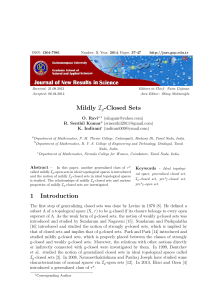
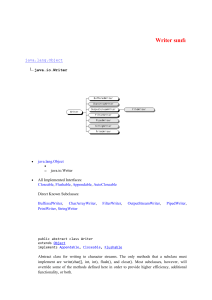



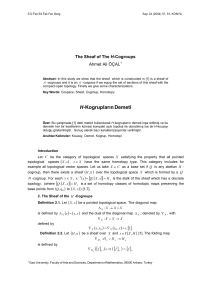
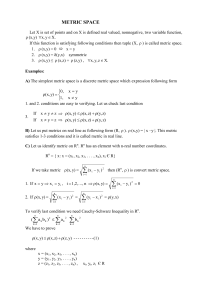
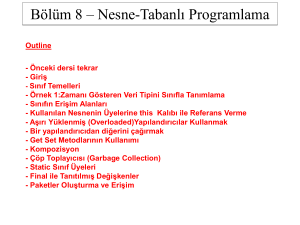
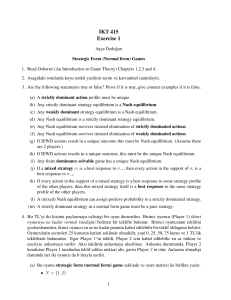
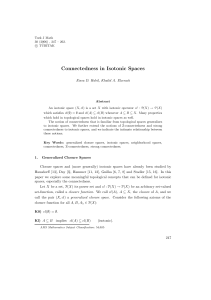
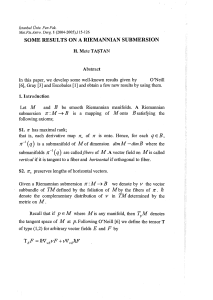
![[Erwin Kreyszig] Introductory Functional Analysis (BookFi.org)](http://s2.studylibtr.com/store/data/005904596_1-634324ffec1bfeb41b79d5ca75ede5d4-300x300.png)